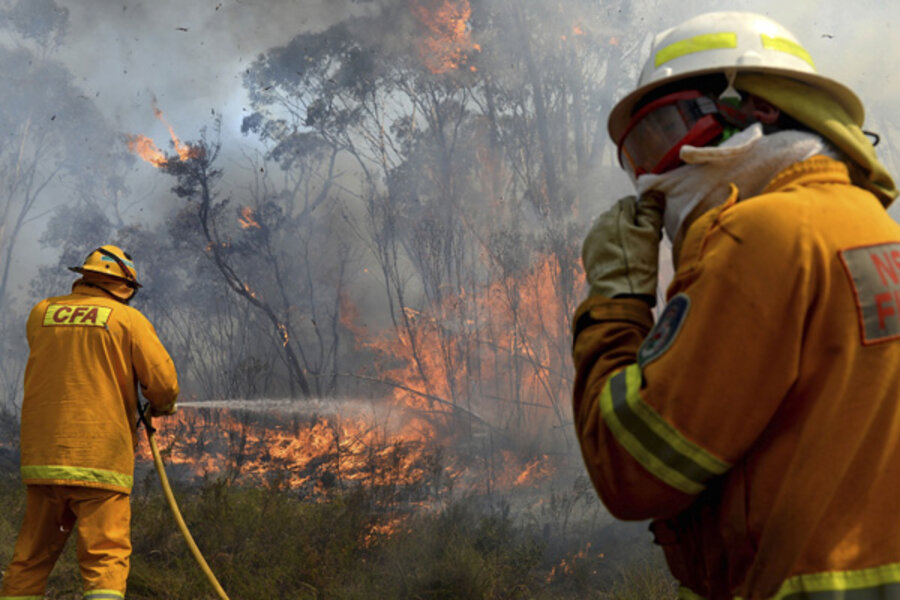Communities pitch in as fires threaten Sydney's outskirts
Loading...
| Sydney, Australia
For the fifth day in a row Australia’s largest city has been choking from the smoke of the massive bushfires burning just a few miles from its outer suburbs. For any Sydney residents who might not be watching the blanket coverage of the crisis on the nightly news, the dirty gray skies and the blood-red sunsets are reminder enough of the infernos raging to the south and west of the city of 4.6 million.
The fires, which have been labeled the worst since the 1960s, prompted the premier of New South Wales to issue a state of emergency on Sunday, giving the authorities the power to evict residents and demolish fire-affected buildings. Strong winds and heat wave conditions forecast for the next two days have led to warnings that two large fires burning in the Blue Mountains National Park could merge and form an unstoppable mega-fire with a front hundreds of miles long.
The potential threat to the city’s outskirts if such a situation develops means that the fires are no longer an existential threat. A large number of Sydney-siders have weekend homes in the mountains and others have friends or family who have lost their properties or have had to evacuate.
Already nearly a dozen villages have been isolated by the blazes, including Mount Wilson, which was used as one of the filming locations for Baz Luhrmann's The Great Gatsby because of its beautiful gardens.
Of the 220 residents, 60 have decided to stay. Rosie Walsh who owns a bed-and-breakfast in the village said the tight-knit community had organized a roster to feed about 100 firefighters from 6 a.m. to 10 p.m.
“Mount Wilson has the best bakers. We've made tons of blueberry muffins,” Ms. Walsh told The Sydney Morning Herald.
Elsewhere, firefighters received help of a different kind when Australian Prime Minister Tony Abbott turned up unannounced to help Rural Fire Service volunteers in Bilpin on the eastern edge of the mountains.
It was only after one of the firefighters posted a photograph of Mr. Abbott on Twitter did the news of the prime minister’s 6 p.m. to 8 a.m. weekend shift come out. A trained firefighting volunteer, Mr. Abbott vowed during his recent campaign that he would continue his community activities, which also involve working in remote Aboriginal communities, if elected prime minister.
Meanwhile, police have arrested a 15-year-old boy and charged him with deliberately starting a fire near Port Stephens on the New South Wales central coast. An investigation is also underway to determine whether army explosives training may have been responsible for igniting the worst of the fires near Lithgow.
For now, however, the priority is on saving lives and property.
“It’s remote, its rugged, its spectacular,” says NSW National Parks deputy incident controller, David Crust of the terrain the firefighters are up against. “But what is more challenging is that there’s very limited access and we’ve got settlements in pockets throughout the fire. It’s been a challenge to mange the fires around those communities.”





